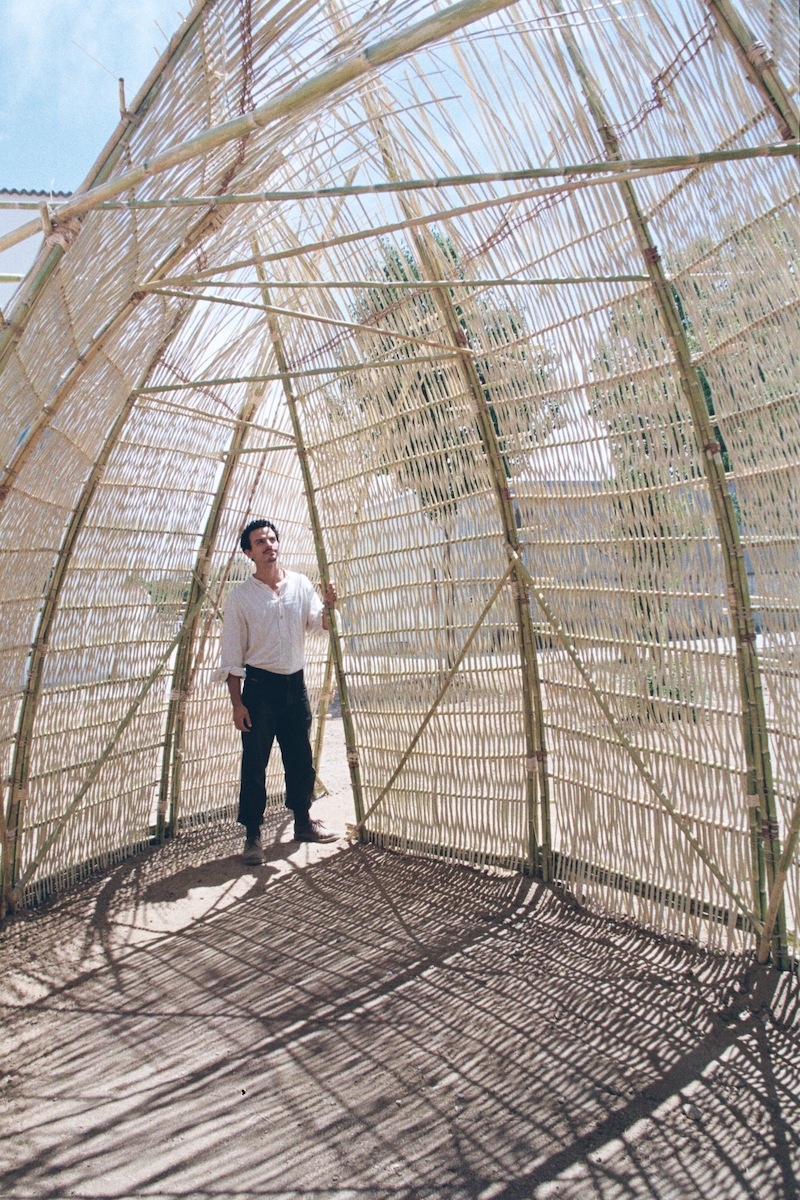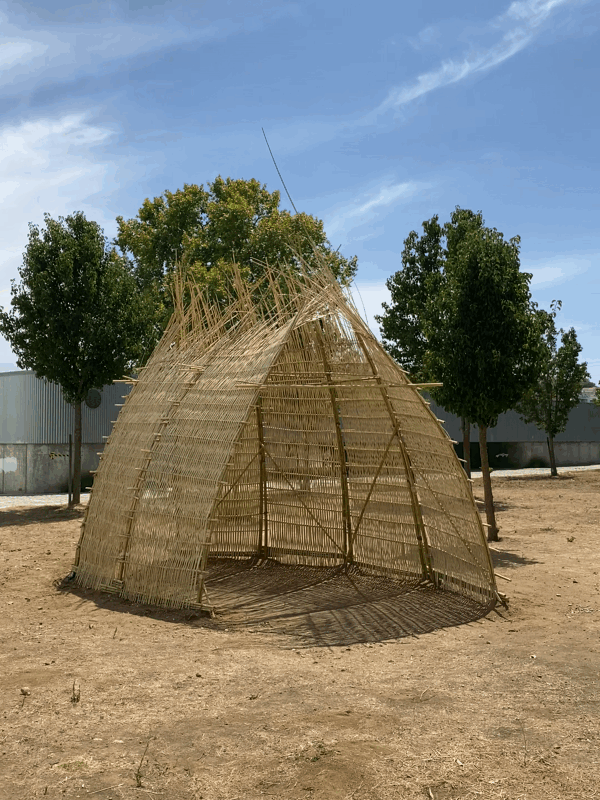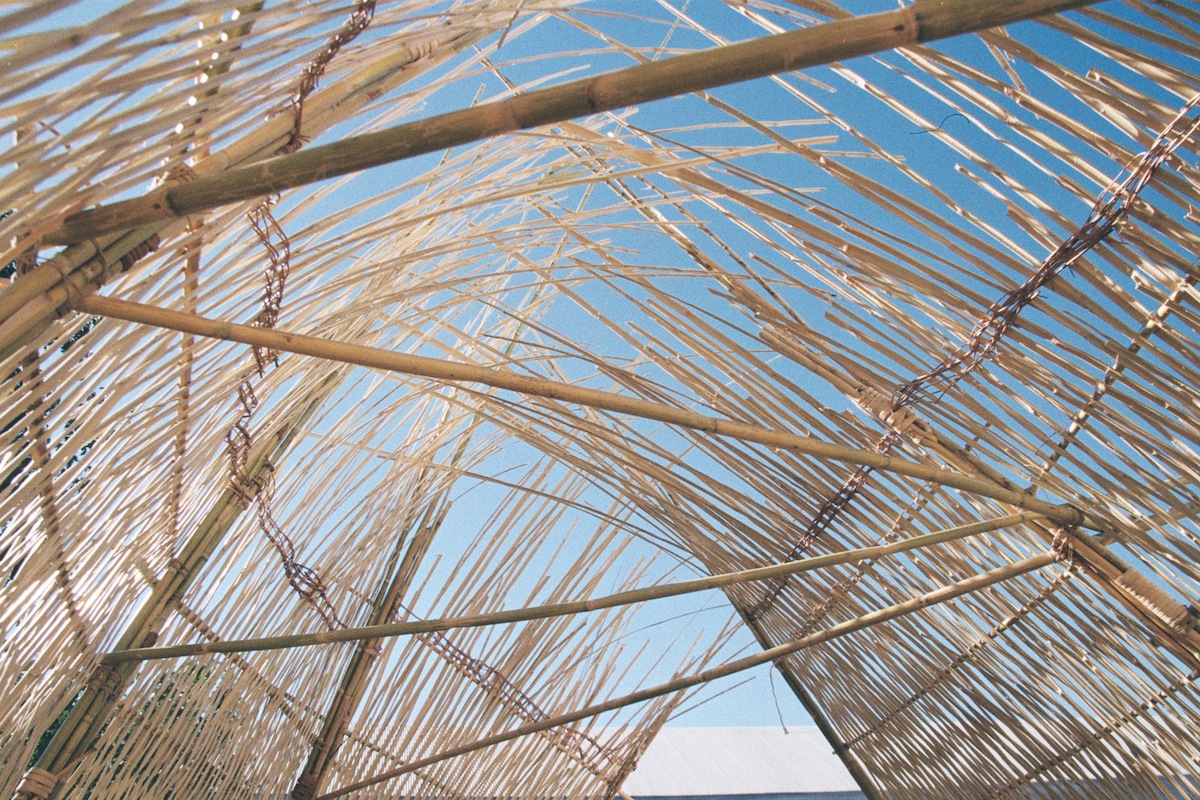Canavial
2022
When people refer to technology in a colloquial sense, they usually mean high-tech stuff like automobiles, skyscrapers or telecommunication systems, which depend on the integration of many different parts. The lure of technological complexity makes it easy to overlook the embedded cleverness of low-tech artifacts, which couple material simplicity with technical effectiveness. From times immemorial, craft cultures from all around the world found many fine solutions for locally sourced materials which adopted the very constituent characteristics of these matters (such as the friction of fibers, the bearing resistance of stone, the pliability of clay and so on).

In 2022 I found myself among another dozen young designers under the scorching sun of Évora’s summer in order to make sense of the overlap between these two worlds (if one insists on making such a rigid distinction): high-tech and low-tech. The premise of the workshop was “artisanship meets digital fabrication,” and we were engaged in designing and building a shading device made from locally harvested cane.
After some speculative prototyping, we finally arrived at the conclusion that the best way to structure this material had already been invented long before we put our minds to it. It was actually all around us, we just had to have eyes to see it. It is hard to tell precisely where woven cane fences were first made, but nowadays they can easily be spotted in any warm-weather country, usually employed by small production farmers to enclose their crops and land.
Cane weaving is a dirt-cheap technique, but working this material is not an easy job. The fibers of this bamboo-like plant are unforgiving (because they easily break when twisted in the wrong direction) and are quite hard on the laboring hands (since the splitting of cane creates very fine splinters). Moreover, the result of this craft is not particularly durable when in direct contact with ground moisture, a condition which is usually addressed in the case of farmers not by avoiding it, but by simply weaving a new fence every few years. I guess all of these things created some cultural stigma around this material and made it a no-go for both designers and architects.

Back to our workshop, and to our attempt to reclaim cane as building matter, it was only once we realized that we did not have to invent anything new that the whole process of making finally flowed smoothly. In order to address the moisture problem, we designed the structure in such a way that it could be easily disassembled during the rainy season. And, as a way to achieve enough height in order to create shadow with this weaving technique (cane fences are usually no higher than a meter or so), we simply inverted the orientation of the weave in relation to the ground. By aligning the longer cane pieces perpendicularly to the floor, we mimicked the normal solicitations of this material and took advantage of its natural resistance to the forces generated by wind and gravity.
The result worked wonders. Although the structure was located on an unshaded field, the temperature inside was several degrees cooler than the outside. Moreover, the openness between the weaved panels allowed the interior of the structure to be penetrated by a very welcome summer breeze.

As an allusion to the fact that we - almost - managed to build the whole thing with just one material (some wicker and cotton fibers were also used in order to tie the poles and the panels), we decided to embrace the organic character of this grown material and leave the cane tops untrimmed.
Tutors: Adrian Krężlik and Mateo Barbero
Mentors: Astrid Suzano and Fatima Durkee
Artisans: Domingos Vaz and Fernando Nelas Pereira
Organized by Passa Ao Futuro and Dosta Tec In partnership with University of Évora, Escola de Artes and Arteria_Lab. With the support of Michelangelo Foundation for Creativity and Craftsmanship, Por.Ta and Interreg España- Portugal.